
All categories
Featured selections
Trade Assurance
Buyer Central
Help Center
Get the app
Become a supplier

(22081 products available)






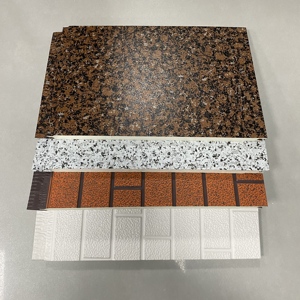









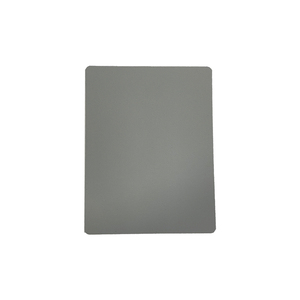
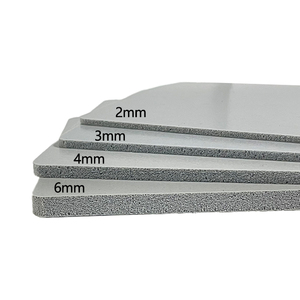
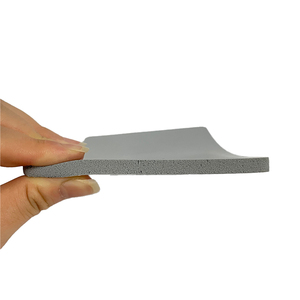





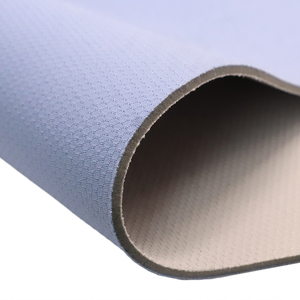














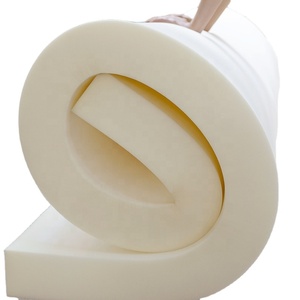



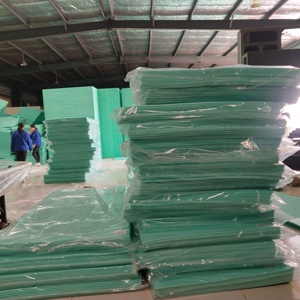

Polyurethane foam manufacturers make different kinds of polyurethane foams suitable for use in diverse settings. Polyurethane foams occur as flexible and rigid foams that fit different applications derived from their structure. Polyurethane foam occurs when polymer chains made of urethane are linked together. Urethane was a newly discovered compound as this was being formed by reacting polyols with diisocyanates.
This type of foam features a porous structure that allows it to easily compress and adapt to shapes. The compressibility of flexible foam makes it ideal for seating and bedding materials as it provides support while conforming to body contours. In addition, flexible foam works in automotive interiors, cushioning, and insulation in appliances.
Manufacturers make these types of foams with a closed-cell structure. They are firm and inflexible compared to flexible foams. Rigid foams usually have superior thermal insulation properties. This makes them ideal for construction elements such as wall and roof insulation boards, refrigeration equipment, and pipelines. Since their structure enables them to trap air and other gases, they offer good energy-saving properties. This structure also contributes to their outstanding durability.
Spray foams usually integrate compounds that produce polyurethane. These are then sprayed onto surfaces to create an insulated protective layer. This type of foam also features diverse applications. They include to provide thermal and acoustic insulation, and air sealing for buildings and homes. Moreover, spray foam insulation expands upon application to fill cracks and gaps. This leads to enhanced energy efficiency.
High resilience (HR) foam has a specific property that makes it different from flexible foam. The former incorporates more air into its structure. This makes it bouncier and lighter than conventional flexible foams. In addition, HR foam offers better durability and comfort compared to regular flexible foam. This makes it ideal for high-performance seating, mattresses, and automotive interiors.
Memory foam is another special type of polyurethane foam. It was engineered to have viscoelastic properties. Its ability to conform and retain shape enables even weight distribution. In addition, it relieves pressure. Its unique structure allows it to absorb and dissipate energy. Memory foam fits several applications in therapeutic mattresses, cushions, hospital beds, and car seats. Here, it enhances comfort and support to users, particularly those who will be seated for long durations.
Retail buyers should consider some of the key uses of poly foam before purchasing poly foams in bulk. These usages provide avenues for the integration of poly foams in distinct settings due to their versatile nature. Moreover, they account for a huge chunk of the demand for various kinds of polyurethane foams, especially at the industrial level. Manufacturers make poly foams for various cushioning needs. These include furniture, automotive seats, and mattresses.
Rigid polyurethane foams have excellent thermal insulation properties that qualify them as ideal for construction materials. Insulation foam manufactured from polyurethane is vital for energy-efficient building systems. In building applications, insulation foams are incorporated into walls, roofs, and spray foam insulation applications. They reduce energy loss and enhance the structural integrity of the building. Additionally, spray foam insulation has become a widely-used technique in the construction sector. It provides air-tight seals that improve energy efficiency and minimize moisture infiltration.
Polyurethane foams also occur as integral components of protective packaging solutions. They help cushion sensitive items during transit. For instance, due to their absorbing qualities, these foams protect electronics, medical equipment, and fragile glassware from shocks and impacts. Their lightweight nature also ensures that packaging does not add excessive weight for shipping purposes.
Polyurethane foams also feature extensively in aerospace and automotive applications. They are specifically used for sound dampening and vibration absorption. Their ability to reduce noise and vibrations improves ride comfort for passengers. For this reason, manufacturers make foams for automotive seats, headliners, and door panels.
These foams also help to reduce noise from external road, engine, and wind, thus enhancing drivers' comfort. Moreover, manufacturers make lightweight insulation foam for aircraft interiors. These help minimize weight without compromising comfort and safety.
Polyurethane foams are also widely used in footwear applications, particularly for shoe soles. PU soles provide good cushioning, flexibility, and durability in athletic and casual footwear soles. Additionally, the insulative properties of the foam keep the feet dry and comfortable. This is regardless of how long the footwear has been donned.
Soft and pressure-relieving polyurethane foams are vital in the medical field. They are used in medical mattresses, wheelchair cushions, and patient positioning devices. PU foam also distributes weight evenly. Its doing so reduces the risk of pressure ulcers and provides patients with comfort as they undergo treatment.
The structure of polyurethane foams greatly affects the characteristics and performance of the foams. This makes their key features and specifications vital in determining the application of various polyurethane foam products.
The density of polyurethane foams has a huge effect on their application and usage in divergent settings. Usually, high-density foams feature greater support and durability. Buyers should consider dense foams for applications that require frequent use, such as seating or mattresses. Low-density foams, on the other hand, are more lightweight. They offer better airflow and are ideal for cushioning in packaging or decorative applications.
As noted earlier, the cell structure of polyurethane foams determines their properties and application. Close-cell foams have a sturdy and firm feel. This makes them suitable for insulation purposes in construction applications. Open-cell foams, on the other hand, have a softer feel and are more compressible. Manufacturers usually make them for cushioning in furniture, mattresses, and car seats.
This is an important feature for those products that are installed in dynamic applications. Manufacturers usually rate the load-bearing capacity of polyurethane foams in pounds per cubic foot or kilogram per cubic meter. In cushioning applications, higher load-bearing capacity generally means the foam will support heavier weights without deforming. This makes foams with higher load capacities preferred for use in industrial machinery and heavy goods transport packaging.
Elongation and tear resistance play a massive role in determining the durability of the polyurethane foam, especially in high-stress applications. Manufacturers rate elongation as a percentage of how much foam can stretch before breaking. Higher elongation rates usually suggest that the foam can easily accommodate flexing without sustaining permanent damage. On the other hand, tear-resistant foams are critical in applications where the foam is subject to heavy use. Such applications are in safety gear, footwear, and shock absorbers.
Buyers also consider the effects of temperature and environmental exposure on polyurethane foams. Manufacturers add stabilizers to aging-resistant foams to inhibit the breakdown of the foam over time. This makes them ideal for outdoor applications. In addition, water-blown polyurethane foams come in handy in applications where the foam will be exposed to high humidity or wet conditions.
Retailers can benefit from selling poly foams with enviable durability and quality. There are several factors that affect the quality and durability of polyurethane foam. These range from its material composition to manufacturing standards. In addition, retail buyers should consider how applicable their purchased products will be. The foams must be usable in various settings and withstand distinct environmental conditions.
A high-density polyurethane foam usually has superior durability than its low-density counterpart. This is because high-density foam has a tougher and thicker cellular structure. This makes it harder to disintegrate or degrade. Therefore, for applications where customers need exceptionally durable foam products, consider purchasing high-density polyurethane foam. They make the best choice since they offer excellent wear resistance and longevity.
The durability of the foam also depends on the cell structure, just like the application. Retail buyers should stock closed-cell foams for outdoor use and applications requiring moisture resistance. Closed cells are impermeable and less likely to absorb water or air contaminants, which degrades the foam. Open-cell foams are more suitable for air circulation. While they are not as durable as closed-cell foams, they work well for upholstery and bedding applications.
To prevent degradation, buyers should advise their customers to avoid exposing polyurethane foam to direct sunlight for long periods. Moreover, extreme temperatures, whether low or high, can seriously affect the quality of poly foams. Therefore, buyers should keep the foam in a stable, temperature-controlled environment. It should also be in a space with no UV light exposure to ensure its durability.
Manufacturing standards are integral in determining foam quality and durability. Buyers who want quality polyurethane foam for sale should request quality certificates such as ISO or ASTM. These certifications are proof that the manufacturer adheres to quality controls in material selection and production. Retailers should also consider certified eco-friendly foams. They are not only good for the environment but also durable since they incorporate sustainable materials that increase foam longevity.
Maintenance goes a long way in ensuring the longevity of the foam. Buyers can stock foams that are easy to maintain and care for. For instance, certain foam products feature protective covers that are removable and washable. In addition, cleaning the foam with non-corrosive products helps prevent degradation to ensure the foam lasts longer.
A1. Purchasing polyurethane foam parts in bulk comes with high quantities discount. Retailers may also get customized foams at a better price when ordering in bulk. This helps to create a unique product that has superior quality and is demanding.
A2. Buyers should weigh the quality, type, the reliability of the manufacturer, and customer feedback when buying polyurethane foam online. They should also consider the specifications of the product and how it compares to similar products.
A3. Polyurethane foams are durable, flexible, and fire retardant. It also features waterproof properties that make it a low-maintenance and long-lasting option for customers seeking quality upholstery. Its comfort, support, and soundproofing properties also make it ideal for use in different spaces.
A4. To improve the properties of polyurethane foam, manufacturers add additives to enhance their performance. These additives include blowing agents that improve the structure and texture of the foams. Chemical and physical ignition retarder additives improve foam fire resistance. Surfactants and impregnating liquids are also added to enhance the closed-cell structure of the foam.
A5. Yes, ambient polyurethane foams are usually 100% recyclable. This makes them environmentally friendly. However, they undergo advanced processes for effective recycling. Some manufacturers also incorporate them into the production of new foam products.